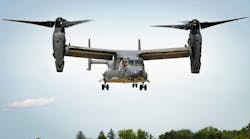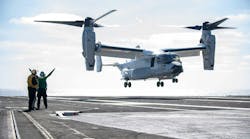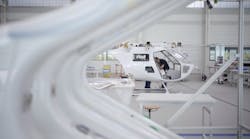Most people, even those of us in the aviation industry, just don’t know much about the helicopter world aside from scoffing at the occasional over flight of their home or workplace. What we might not realize is that helicopters play an important role in not only our aviation system, but also our daily lives. And that role is increasing in its scope and scale.
When we think about helicopters, the more obvious roles are that of emergency response. Police departments use helicopters to rapidly deliver tactical officers, perform search and rescue, and to provide high level surveillance. Helicopters also prove invaluable in responding to natural disasters. In wild fire situations, like the United States has seen this summer in the west, helicopters are used extensively. Not only do they pour retardant, but even more critically, they can rapidly move firefighters and equipment to locations that in many cases are otherwise all but inaccessible. This repositioning maneuver could take hours or days on foot or by truck.
The same is true in reverse. Helicopters allow for the rapid extraction of people from dangerous situations. In the aftermath of Hurricane Katrina, the Helicopter Association International estimated that about 60,000 stranded people were rescued by nearly 700 civil and military helicopters; all without a single fatal accident. And of course on a daily basis, helicopters provide air ambulance services allowing patients to be transported to more capable facilities in the event of major injuries or illnesses.
Helicopters are also extremely effective at providing an “eye in the sky.” Whether it’s for the news media, civil engineers, or wildlife officials, the unique capabilities of helicopters offer some strong advantages blending visual reconnaissance and maneuverability. The following are a few examples of just that:
• Helicopters play a critical role in the delivery and maintenance of our nation’s electrical power system. They are used to string and inspect power lines and help operators look for downed lines. Helicopters can even hover next to the lines, allowing a specially equipped lineman to make repairs in mid-air.
• Lumber companies depend on helicopters to help selectively harvest trees. They reduce environmental impact by eliminating the need to cut roads into forests to get the trees out. Helicopters are used in some areas for wildlife research and population control. And to combat wildfires, helicopters perform water drops to suppress the blazes.
• In the Gulf of Mexico, helicopters safely transport nearly 9,000 oil production and support workers per day. They flew 325,000 flight hours with no fatal accidents in 2011 according to the Helicopter Safety Advisory Conference.
From the time we wake up in the morning, to when we go to bed at night, helicopters stand vigil to improve our quality of life. The FAA recognizes this and as a result, the administration has recently added new positions for helicopter-only inspectors, as well as incorporated new helicopter-related training. In the broad range of helicopter operations, FAA aviation safety professionals from aircraft certification, flight standards, and air traffic continue to provide essential services to the multifaceted National Airspace System.
This article appeared in the November/December issue of FAA Safety Briefing.
Matt Rigsby is a transportation industry officer and accident investigator in the FAA Rotorcraft Directorate. He is an A&P as well as a fixed and rotary wing pilot, who has worked in the helicopter community for 20 years. He has participated in more than 90 helicopter field accident investigations, both domestically and internationally.



